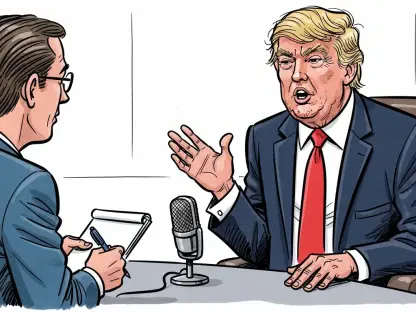In recent years, tariffs have been central topics in trade discussions, especially concerning their effects on deficits and the broader U.S. economy. President Trump’s tariff policies aimed to decrease deficits by an estimated $2.5 trillion, rivaling deficit increases from other budget propositions. As these tariffs have influenced economic dynamics, questions have arisen about their efficacy in deficit reduction and potential detriments to economic growth.
Understanding the Objectives of Trump’s Tariff Policies
President Trump’s tariffs were initially introduced with clear objectives: balancing trade deficits and promoting domestic manufacturing. The focus was on imports from countries like China, Canada, and Mexico, with rates ranging from 10 to 30 percent. These tariffs aimed to encourage American production by creating a more competitive landscape for domestic industries.
While tariffs provided avenues to bolster U.S. manufacturing, they also played significant roles in the broader trade landscape. Their implementation brought historical highs to tariff levels, creating both opportunities and challenges for various sectors. As some tariffs were paused due to trade negotiations, their lasting impacts on trade and industry practices have remained a critical point of analysis.
Economic Impact of Tariffs
Trends and Consequences
The assessment of tariffs reveals a dual effect. On one hand, tariffs offer potential in reducing deficits through increased federal revenue. On the other hand, they are associated with economic contraction, particularly affecting sectors sensitive to price changes. Trends show shifts in consumer behavior, affecting demand in industries essential to the lower-income population, such as automotive and home appliances.
Furthermore, markets have experienced turbulence as tariffs altered dynamics across industries, creating ripple effects that influence consumer preferences and organizational strategies. While some industries adapted well, others faced challenges with price hikes and changing market drivers that redefined opportunities.
Economic Data and Projections
Market data and performance indicators present a nuanced view of tariff impacts, identifying areas of growth tempered by constricted economic activity. Projections from policy groups like the Congressional Budget Office offer foresight into the near future, with revenue increases but simultaneous offsetting shrinkage. With inflation rates affecting tax revenues, stakeholders must balance short-term benefits against long-term economic health.
Forward-looking analyses emphasize anticipating economic shifts prompted by tariffs’ influences on governmental and consumer spending. As projections reveal complex interactions within the economy, policymakers are tasked with navigating these dynamics effectively to sustain economic stability.
Challenges and Complexities
While tariffs offer fiscal gains, they pose challenges such as heightened operational costs and disruptions across industries. Economic inequality may worsen as particular demographics bear disproportionate burdens from tariffs’ effects. Navigating these complexities requires strategies that mitigate adverse impacts while leveraging potential opportunities.
Policymakers hold the key to attenuating negative consequences with alternatives that reinforce resilience within affected sectors. Solutions like subsidies for vital industries or targeted tax incentives could provide relief, helping maintain the balance between revenue growth and equitable impact.
Regulatory Implications
Tariffs fit within a larger regulatory framework involving compliance and trade negotiations. Their role in shaping industry practices is integral, affecting how businesses adapt operational models to comply with evolving regulations. Trade talks necessitate careful consideration, balancing international relations with economic objectives to optimize tariffs’ effectiveness.
As the regulatory landscape changes, understanding the nuances of compliance and negotiation becomes essential. The right strategies could enhance domestic trade while maintaining strong international partnerships, ultimately benefiting the wider economy.
Future Outlook
The impact of tariffs extends into the future, shaping U.S. economic policy for years to come. Emerging disruptors are redefining global trade dynamics, enticing policymakers to consider new approaches that address evolving consumer preferences and economic trends. The long-term outlook will hinge on the careful assessment of tariffs and their effects.
Potential changes in trade agreements and the global economy could influence the direction of U.S. policies. Embracing innovation and international cooperation might facilitate adjusting to these shifts, ensuring tariffs serve as effective tools rather than hindering growth.
Conclusion
The analysis unveils significant insights into tariffs’ economic implications, with both notable benefits and challenging consequences. Recommendations point toward developing adaptable policies that optimize profitability without neglecting socio-economic impacts. Strengthening the U.S. economy and international trade relations may rely on embracing forward-thinking strategies that balance fiscal goals with sustainable development.









